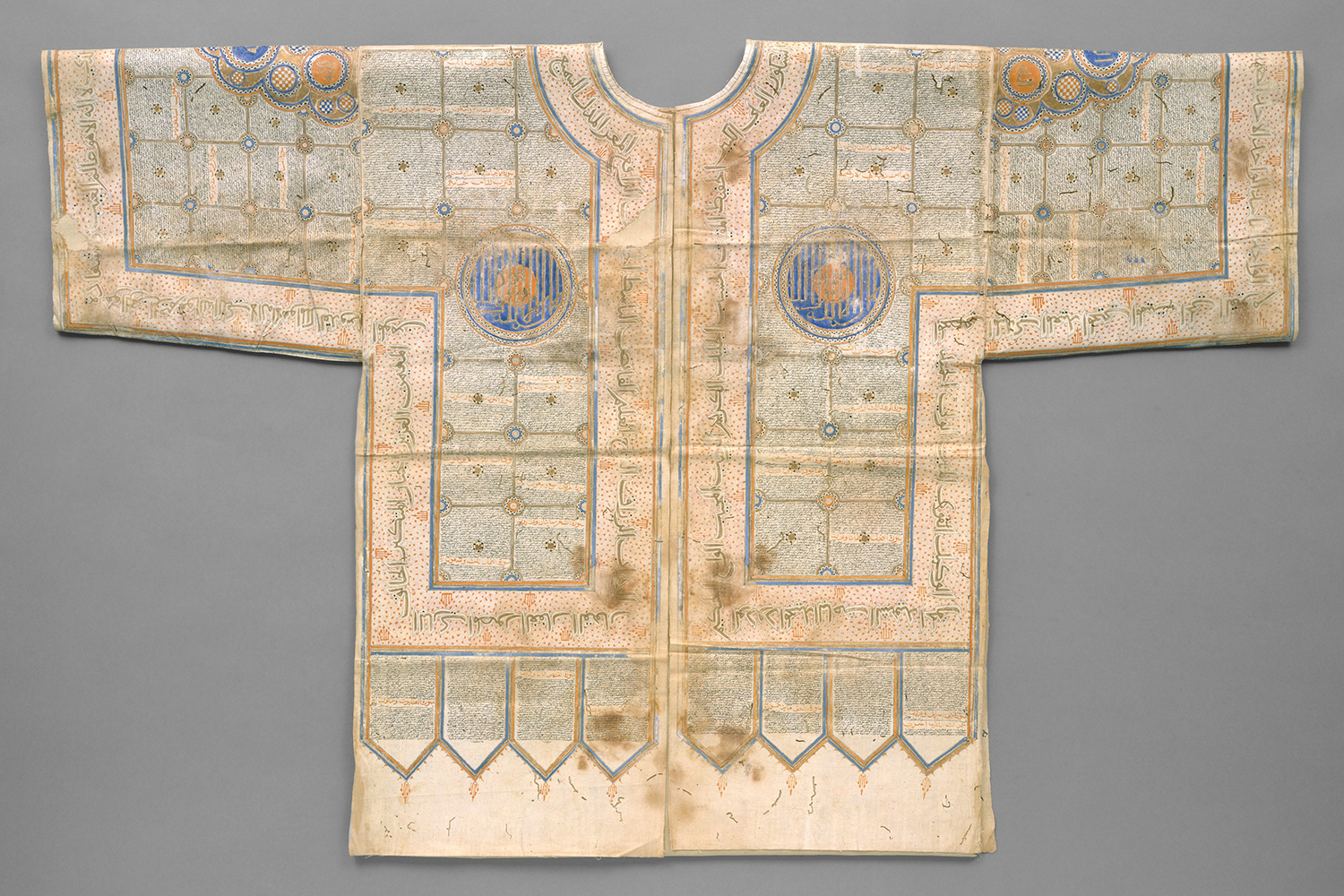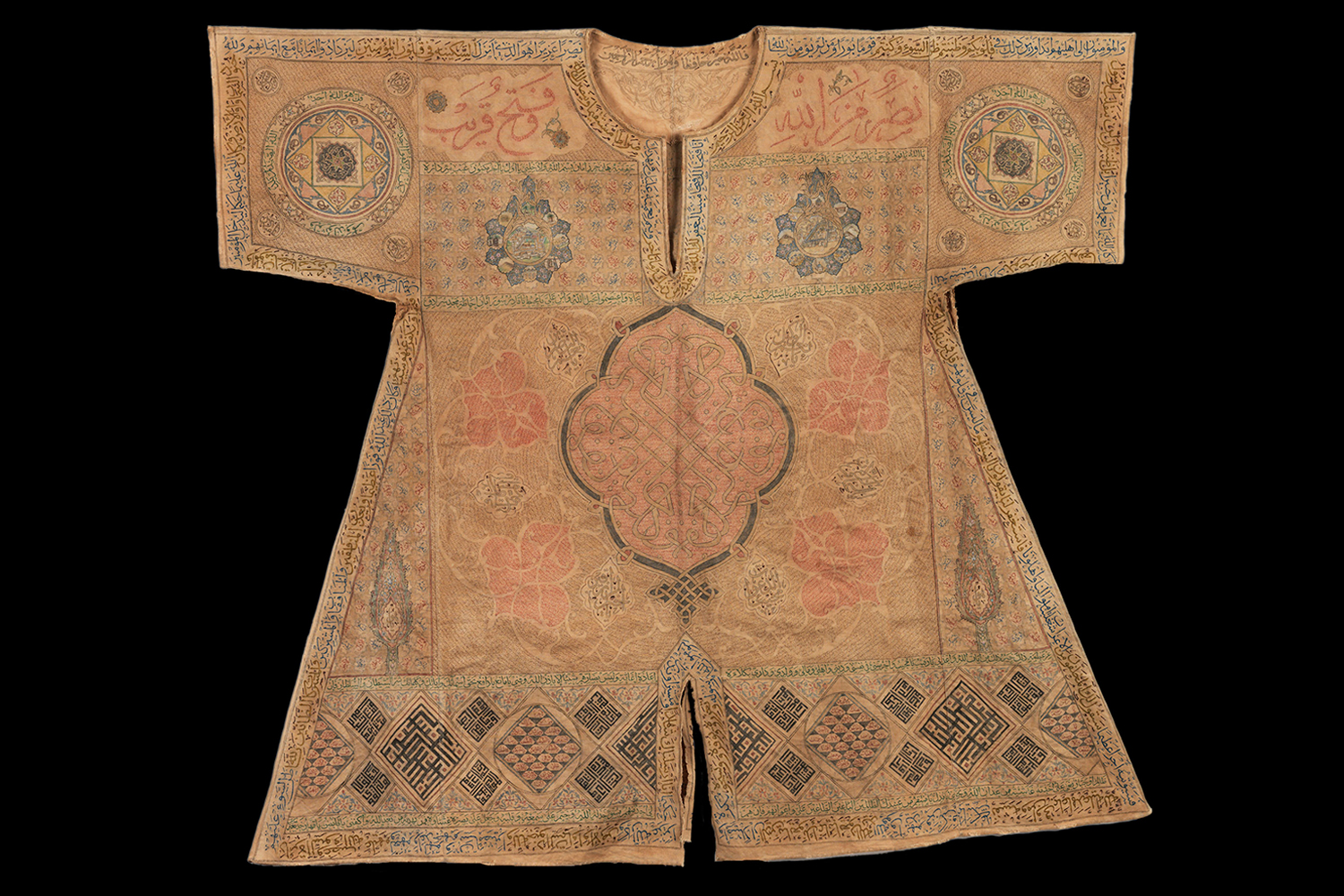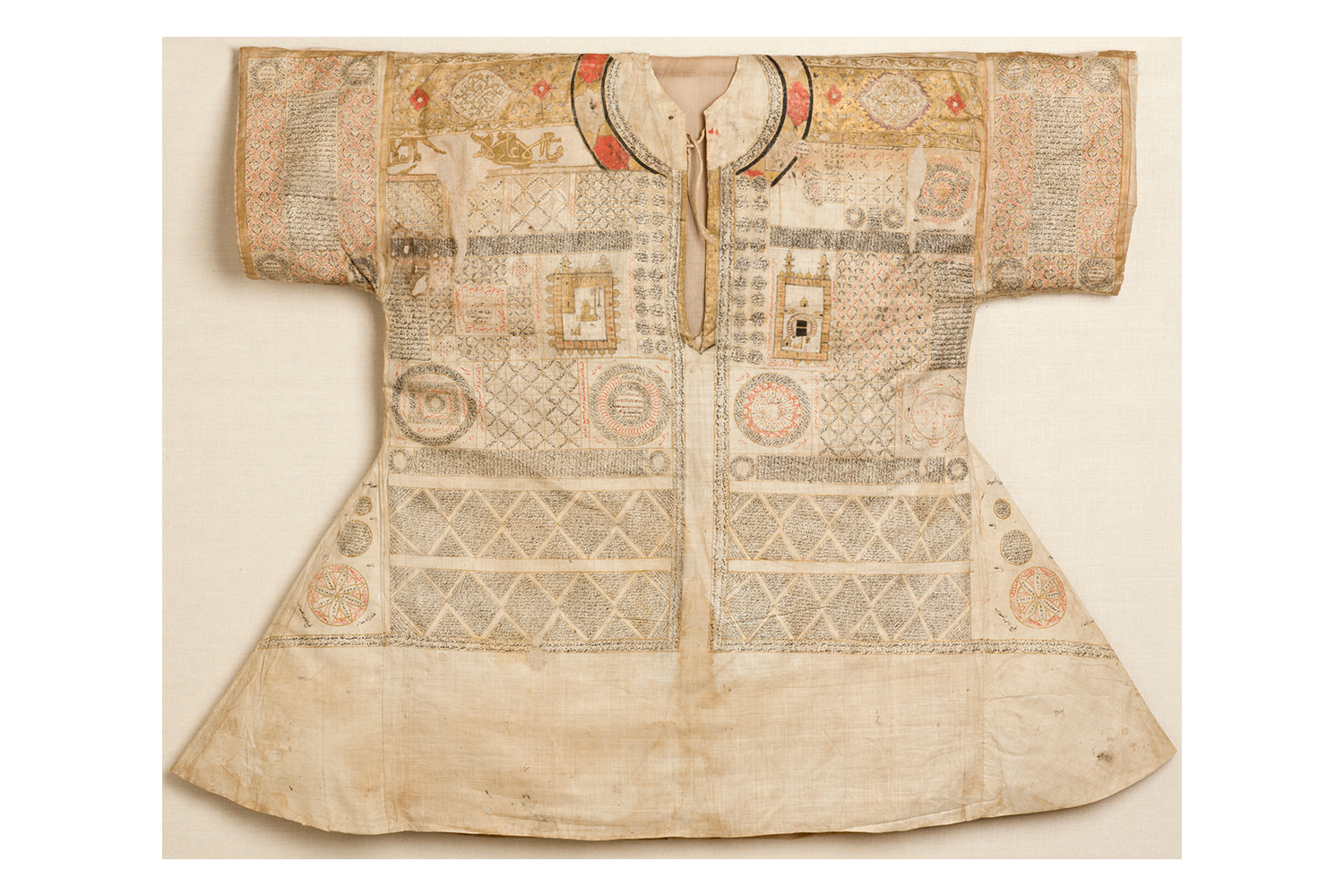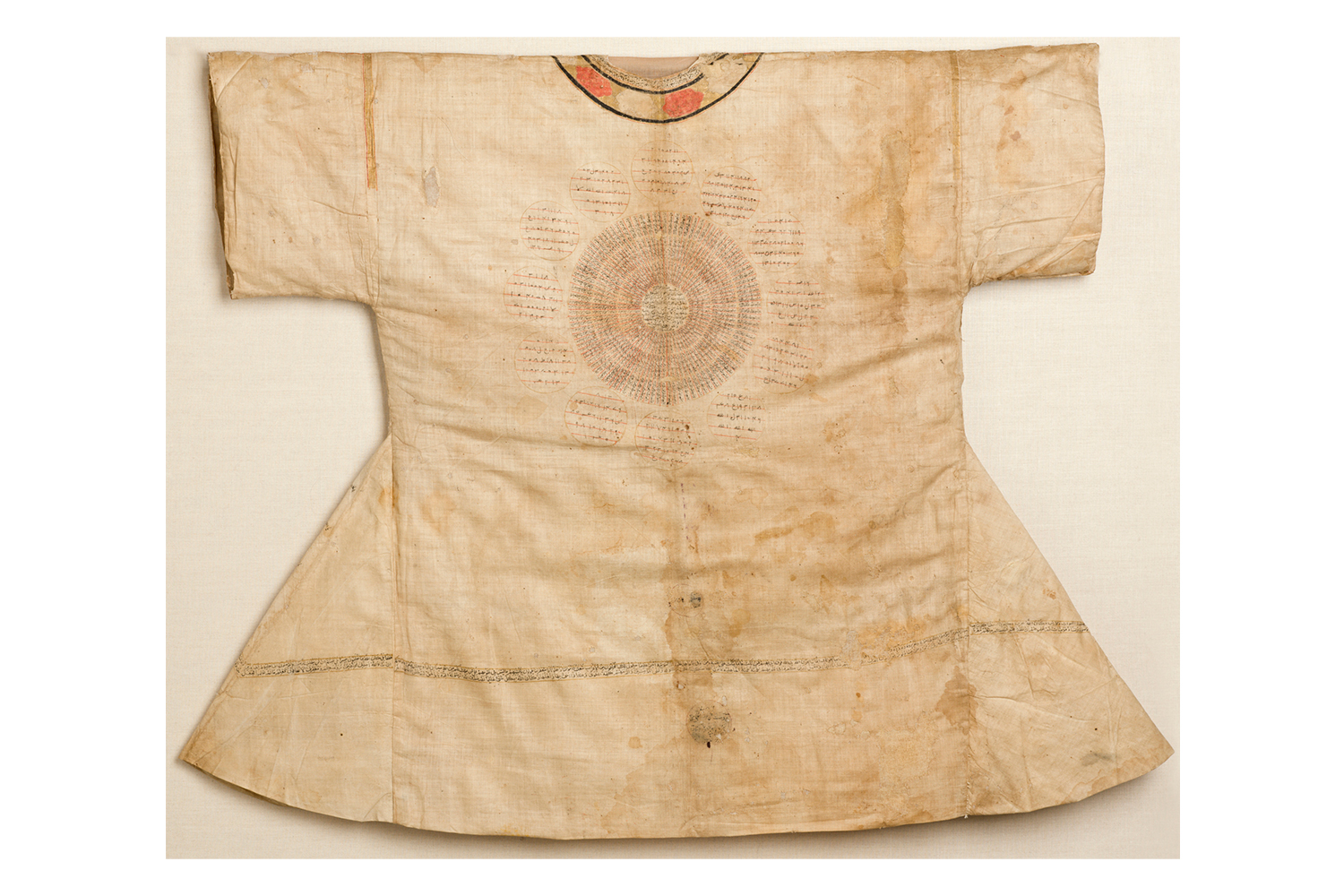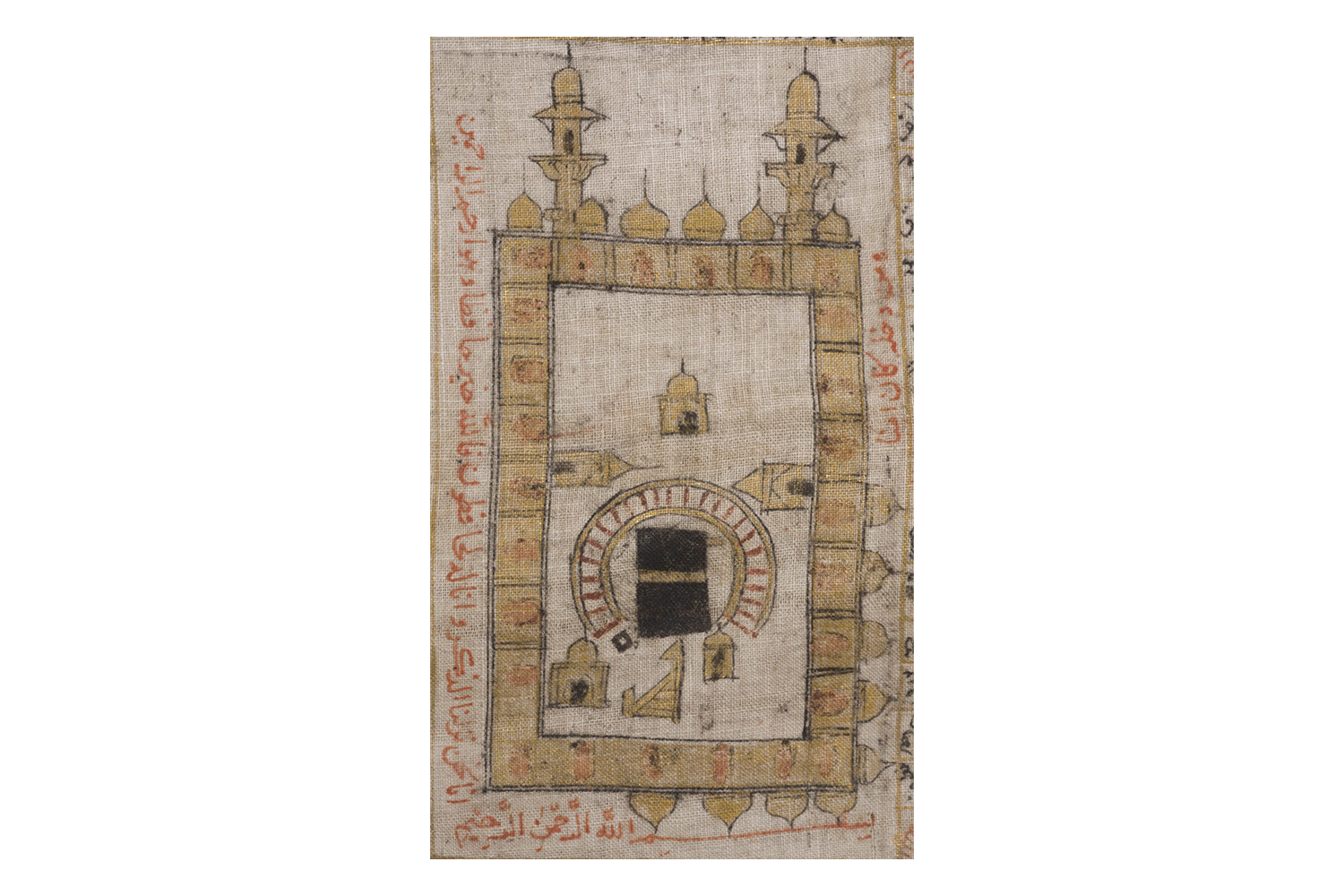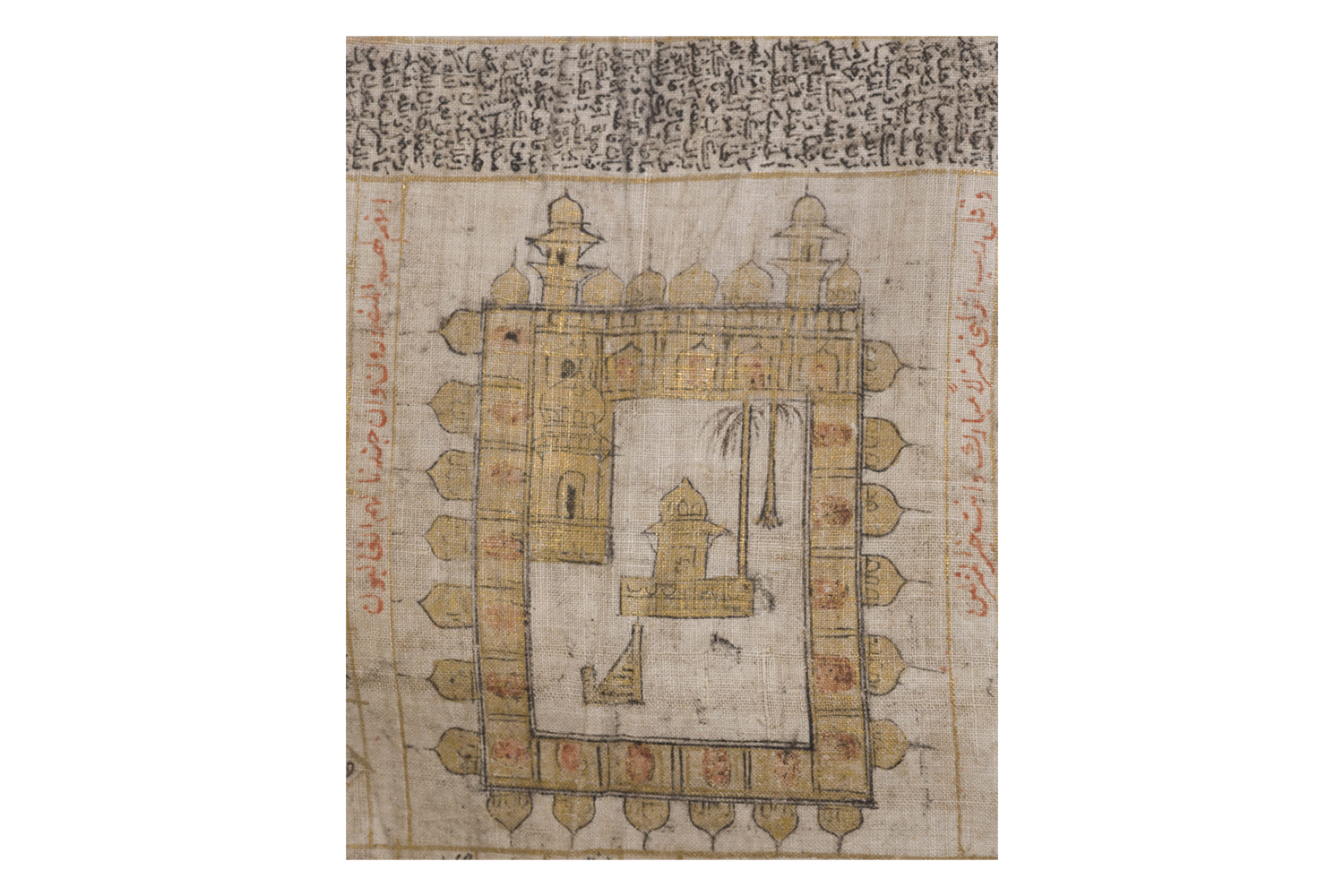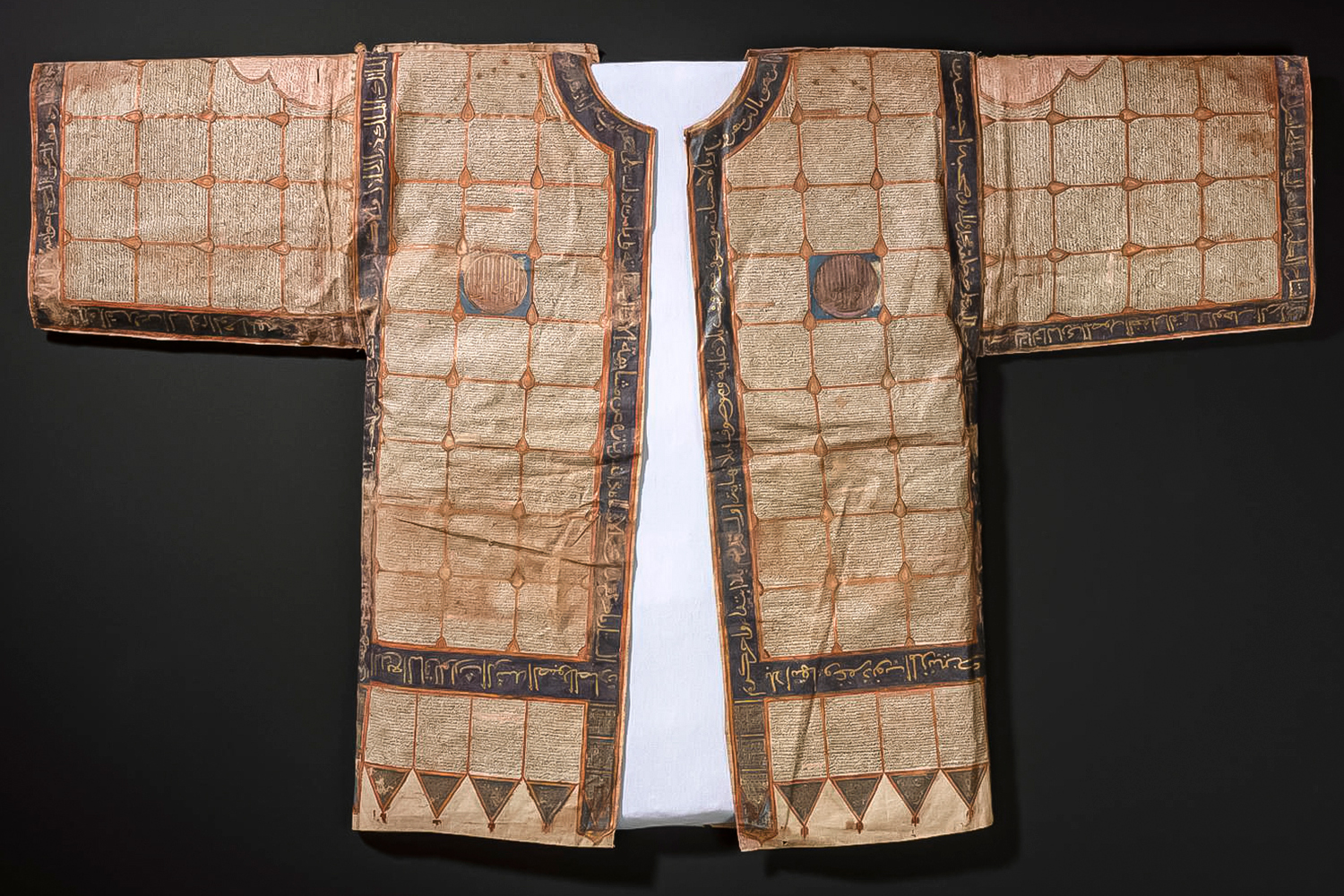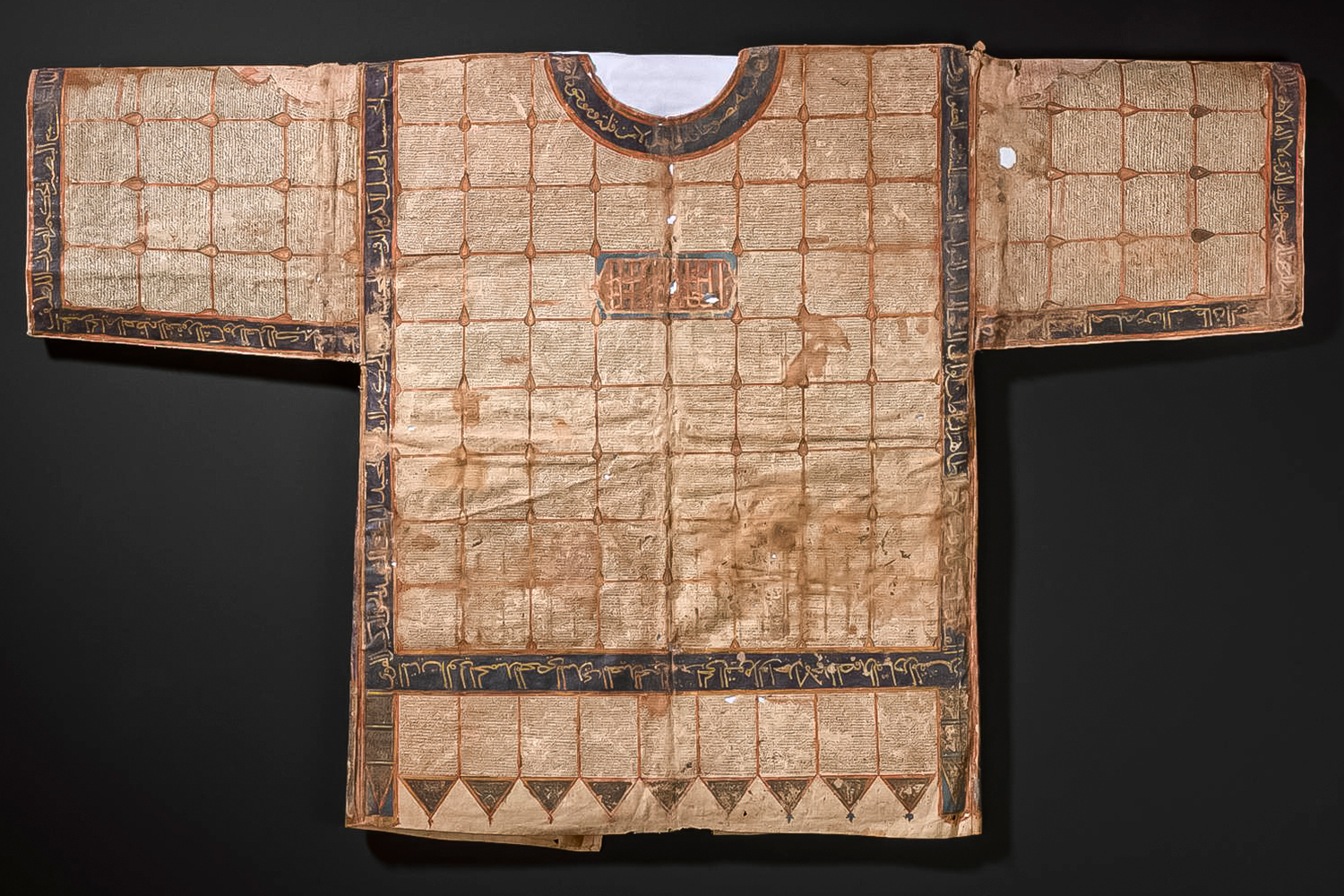ARTICLE
Islamic Talismanic Shirts
A type of sacred garment in Islamic culture, talismanic shirts were believed to protect their wearers from bodily and spiritual harm. Intricately ornamented with sacred motifs and verses from the Quran, they were made for royalty or high-ranking individuals, particularly for military contexts, where they are thought to have been worn under the armour. With their earliest known examples dating to the fifteenth century, these shirts were made in Muslim courts of the Indian subcontinent, Ottoman Anatolia, Safavid Persia and West Africa, with stylistic variations based on geography and patronage. Talismanic shirts made in the Indian subcontinent form the most cohesive group among these in terms of their design and iconography, and are unique in that they have the entire Quran inscribed on their surface. Attributed to the Sultanate and Mughal courts in northern India and the Deccan and dated between the fifteenth and nineteenth centuries, they closely parallel the Quran manuscripts made in these courts.
Talismans in Islamic culture have included a range of objects, including rings and pendants, scrolls, and clothing. Believed to bestow luck and protection from injury, disease, misfortune and death upon their bearers, such objects commonly owed their power to elements such as alphabetic or abjad numerals, magic squares (wafq al-a’dad), symbols of astrological significance, and most prominently, inscriptions from the Quran. Islam holds letters and writing to be potent, and the inscribed names of god, or Allah, as well as Quranic verses, are considered to imbue protective and healing powers to the objects that bear them. Further, the believed magical power of garments in the Islamic tradition long predates medieval talismanic shirts: a verse of the Quran narrates an incident in which the shirt of the prophet Yusuf restores the sight of his blind father Yaqub, simply by being passed over his face. Another example is the cloak of the Prophet Mohammed, significant in Islamic history and culture not only as a relic but as an object that lent power and legitimacy to leaders associated with it over time.
A well-preserved and extensively studied talismanic shirt is housed in the Victoria and Albert Museum (V&A), London. It is dated to between the late fifteenth and early sixteenth centuries, and attributed to northern India or the Deccan. It is a long-sleeved garment with a round neck and open front, measuring about 64 centimetres in length and 100 centimetres in width with the sleeves outstretched. It has a simple, squarish cut and consists of three pieces of fabric — a single large piece folded over at the shoulders to form the torso of the shirt, and two smaller pieces for sleeves sewn on either side using a back stitch. The cotton fabric is heavily starched, making the shirt stiff and card-like. While some talismanic shirts from the region feature fastenings, this one has none, and is thought to have originally been only partially open in the front and fully cut open later. Another, nearly identical one is housed in the Metropolitan Museum of Art, New York.
The visual language of the shirt’s inscriptions and decorations closely follows that of the Quran manuscripts produced at the time in India’s Sultanate courts. The red, blue and gold paint used in addition to black ink echoes the colours commonly used in Islamic manuscripts, and is found to be derived from cinnabar, red lead, white lead, lapis lazuli and gold. The shirt’s outer surface is finely painted with the calligraphed Arabic text of the Quran in its entirety, with the verses of its 114 surahs or chapters starting at the back of the right sleeve and concluding at the end of the left sleeve. Written in the naskh script, the text is organised into a grid, which features medallion designs at the intersections of the squares, and a six-petalled floral motif at the centre of each square. Both of these motifs are seen in contemporaneous Quran manuscripts, in which the medallions are used as dividers between verses. The grid is bounded by a wide border that runs along the shirt’s edges, containing larger Arabic calligraphy of the ninety-nine names of God written in the Bihari script. A commonly used script in India until the sixteenth century, it is distinguished by the golden outlining of the name of god. Another feature that the shirt shares with these manuscripts is a repeating motif in red that appears to be an abstracted form of the word ‘Allah’ in Arabic calligraphy, decorating its borders.
Two large roundels are painted over the chest area, featuring the Islamic oath, Shahada, in golden thuluth script over a red and blue background. The shirt’s back features a protective verse invoking the merciful and compassionate god. Running prominently across the centre of the back, this inscription is enclosed within a red, blue and gold cartouche, which is filled in with fine cross-hatching and red speckles, much like the infill of the shirt’s borders and other vacant spaces. A large cartouche containing a cluster of circles featuring the name of Allah is also present on each sleeve. Painted along the lower part of the shirt, on both front and back, is a row of downward-pointing shapes that accommodate part of the Quranic text. The placing of the chest roundels, cartouches and the fringe-like lobed row is reminiscent of the protective panels in Islamic armour, underlining the shirt’s metaphoric powers of protection.
Such shirts were made from the plain-weave cotton indigenous to India, which was sized using a starchy solution in order to make the surface stiff and smooth in order to be able to paint easily and intricately on it. The result is a paper- or parchment-like material, which would have made it difficult to use the shirt as a garment for any prolonged use. The ink and pigments used are also water-soluble and prone to smudging or running upon getting wet. Little is known about how exactly these talismanic shirts were used, and scholars speculate that they may have served symbolic, ritual purposes rather than as a garment. However, stains and smudges from sweat have been found on some of these shirts, including the V&A specimen, suggesting that they were worn at least for some time.
The materials and intricate artisanship involved in making talismanic shirts rendered them expensive and time-consuming to produce. This meant they were commissioned only by kings or elite members of their courts or armies — who sometimes called them ‘victory shirts’ or ‘armour shirts’ — and later passed down through generations. In light of the shirts’ material and visual features, which echo those of religious manuscripts, scholars have suggested that they be interpreted in the realm of the book arts as much as wearable talismans.
At the time of writing, about fifteen other specimens of Indian talismanic shirts are known to be housed across museums and private collections around the world, including the Salar Jung Museum, India; the Khalili Foundation, UK; and the Virginia Museum of Fine Arts, USA.
Bibliography
Alexander, David G. Islamic Arms and Armor: In the Metropolitan Museum of Art. New York: The Metropolitan Museum of Art, 2015.
Felek, Özgen. “Fears, Hopes, and Dreams: Talismanic Shirts of Murād III.” Arabica 64, no. 3/4 (2017): 647–72. https://www.jstor.org/stable/26569044.
Gruber, Christiane. “The Arts of Protection and Healing in Islam: Talismanic Shirts as Premodern ‘PPE’.” Ajam Media Collective. April 30, 2021. Accessed December 5, 2023. https://ajammc.com/2021/04/30/premodern-ppe-talismanic-shirts/.
Haldane, Elizabeth Anne. “A Testament of Faith: An Indian Talismanic Shirt.” V&A Blog: Conservation Journal. September 13, 2016. https://www.vam.ac.uk/blog/caring-for-our-collections/a-testament-of-faith-an-indian-talismanic-shirt.
The Metropolitan Museum of Art. “Talismanic Shirt.” Accessed November 9, 2023. https://www.metmuseum.org/art/collection/search/453498.
Moghaddam, Behnaz Atighi. “A Warrior’s Magic Shirt.” V&A Blog: Guest Post. June 17, 2015. Accessed November 9, 2023. https://www.vam.ac.uk/blog/fabric-of-india/guest-post-a-warriors-magic-shirt.
Muravchick, Rose E. “Objectifying the Occult: Studying an Islamic Talismanic Shirt as an Embodied Object.” Arabica 64, no. 3/4 (2017): 673–93. https://www.jstor.org/stable/26569045.
National Heritage Board. “A Talismanic Youth’s Jama.” Roots: Collections. Accessed December 6, 2023. https://www.roots.gov.sg/Collection-Landing/listing/1351570.
Victoria and Albert Museum. “Talismanic Shirt.” Collections. June 25, 2009. Accessed December 5, 2023. https://collections.vam.ac.uk/item/O481040/talismanic-shirt-unknown/.






